Air conditioning and climate control are similar ways of cooling your car's interior, and they've been included as standard on most cars for the past decade or so.
But what's the difference between air-con and climate control? Read on to find out – starting with definitions of each technology.
What is air conditioning?
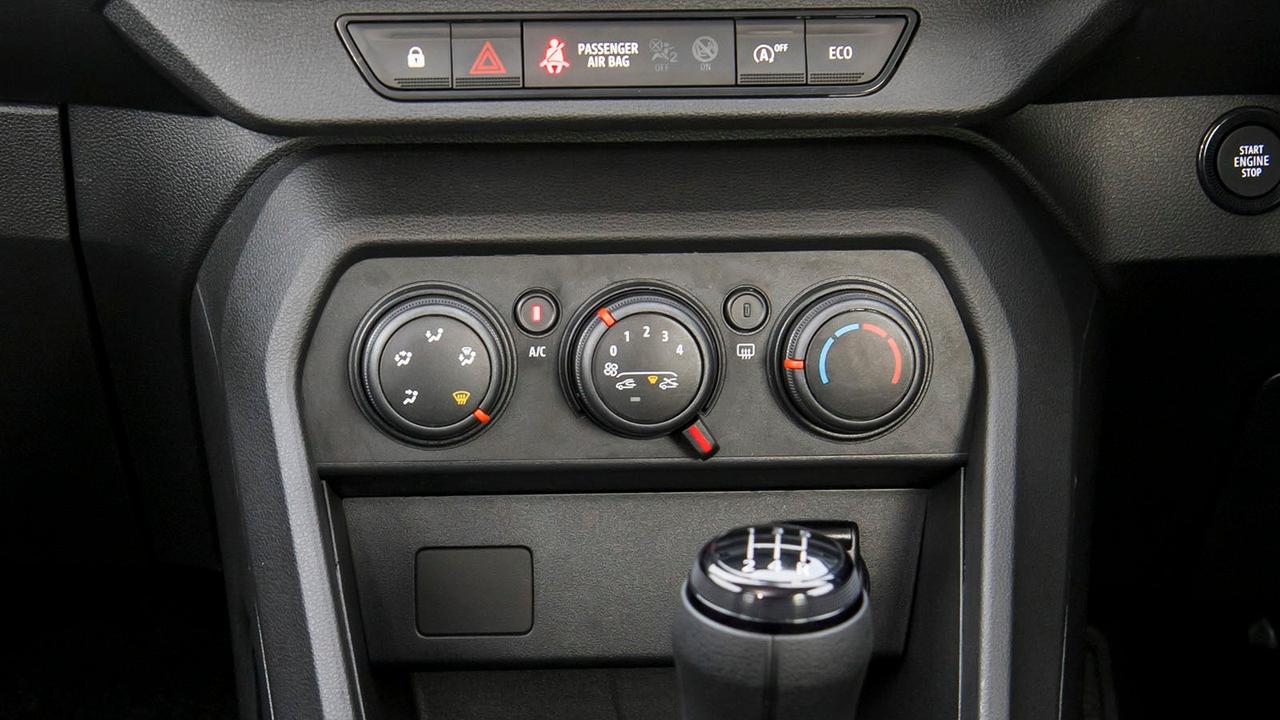
Air conditioning is a system that cools down air, which is then blown into the car's cabin, reducing the inside temperature. Cars equipped with air con have a small refrigerant pump (a bit like that in your kitchen refrigerator) driven via a belt attached to the engine. You'll also find a network of pipes and a condenser under the bonnet, which looks like a small extra radiator sitting in front of the standard radiator for your engine's cooling system.
If your car has air con, you'll find a button next to your heater controls marked either with 'A/C' or, occasionally, a snowflake symbol – this turns the air-con system on or off. With the air con off and your car's heater set to the coldest setting, it'll pump air in at whatever the outside temperature is. Turn the air con on, and the coldest heater setting will now pump air in that's a lot colder than the outside temperature, cooling you down and making you go 'ahhh'.
What is climate control in a car?
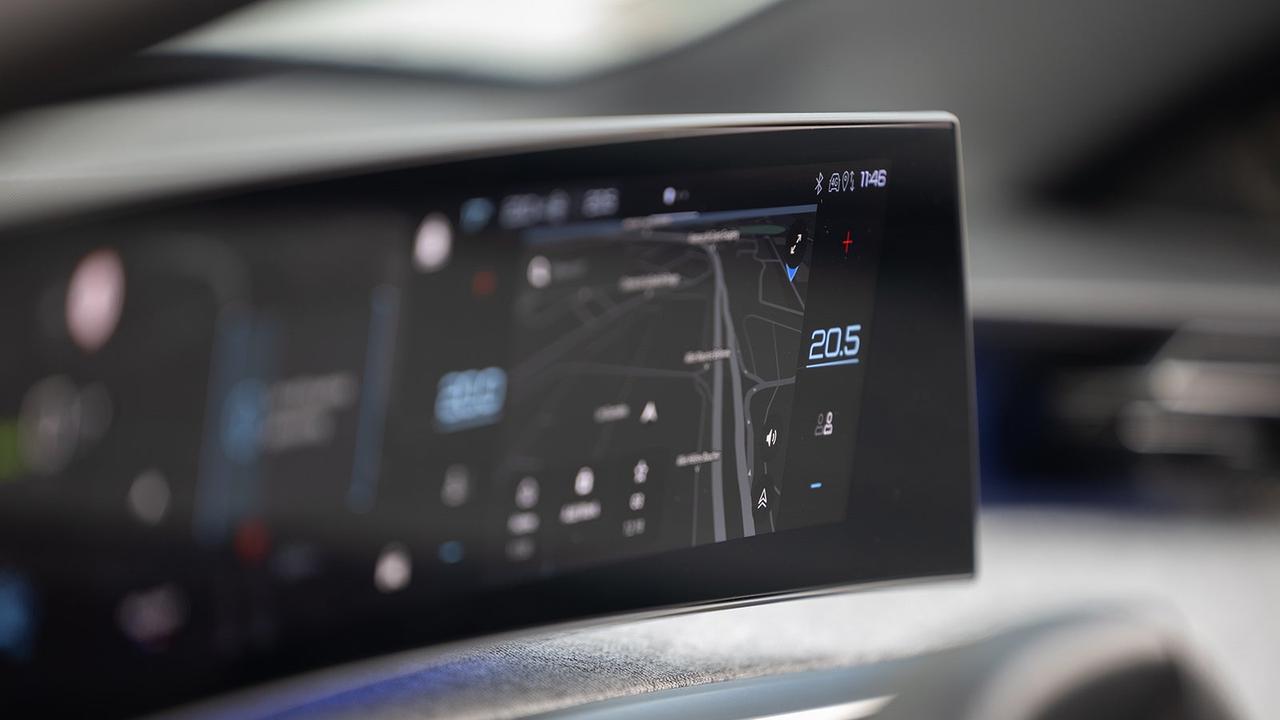
Climate control is an upgrade over standard air con. Mechanically, it includes the same pump and refrigerant setup as air con, but uses a computer to automatically adjust the amount of cooling the system does so you can keep the car's cabin at a set temperature.
Cars with climate control don't usually include a temperature dial with simple red and blue markings for hot and cold. Instead, they'll have either a physical knob or on-screen controls to pick a specific temperature – such as 18ºC – which the system will then automatically adjust the cabin's temperature to by delivering the precise amount of air con or heating as necessary.
What’s the difference between climate control and air con?
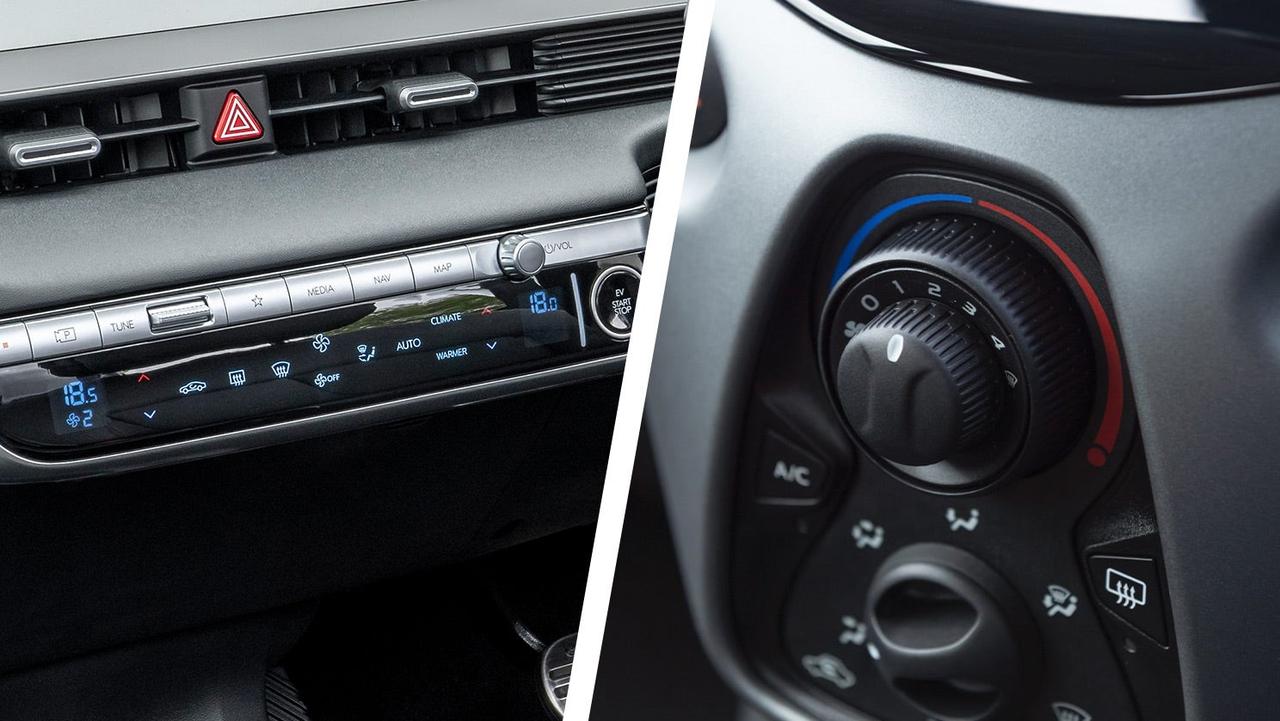
The key difference is that climate control lets you pick a specific temperature. Once you've done this, the computer will automatically work out how much air con or heating is required to get the interior to the chosen temperature, as well as where to blast the air.
Air con, on the other hand, simply cools the air coming into the car by a fixed amount. You can make broad adjustments using the red-to-blue temperature dial but, if you find that the cabin ends up feeling either too cold or not cold enough, you'll have to go and twiddle the dial yourself to find a comfy setting. Climate control removes this guesswork by simply letting you pick the temperature you're comfiest at.
How does air conditioning work?
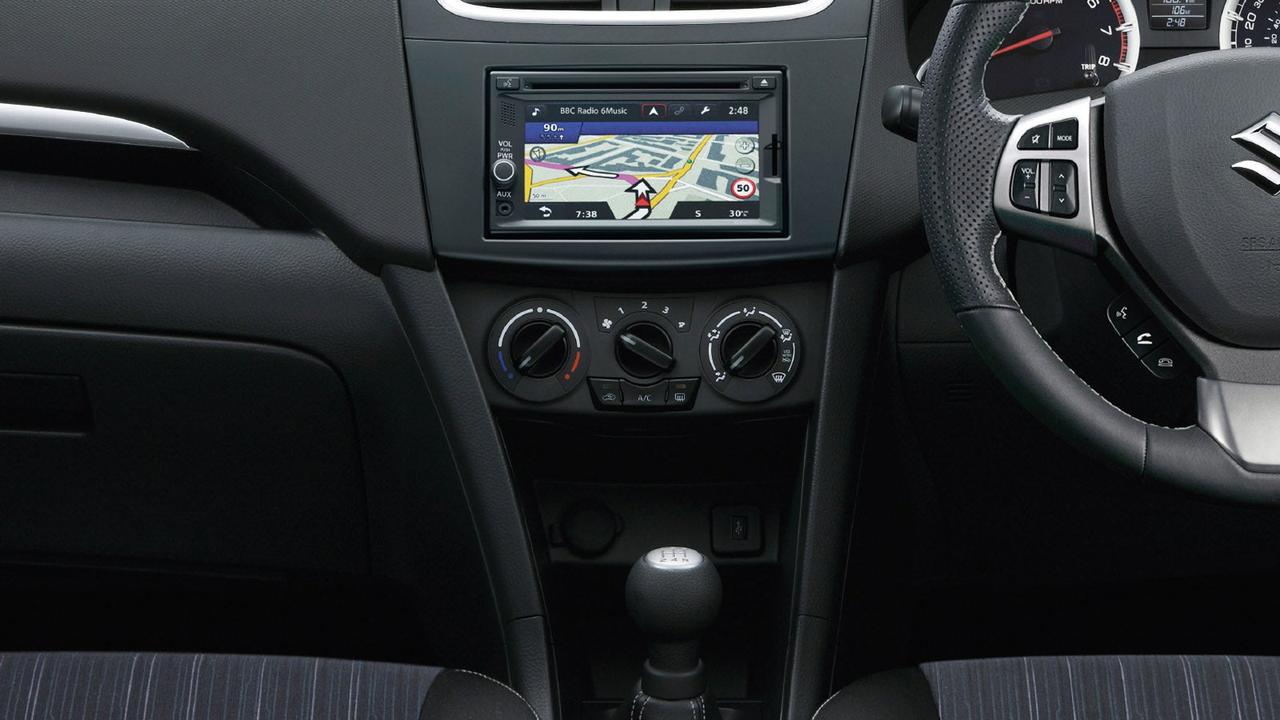
Air conditioners rely on a fundamental scientific principle – that increasing a fluid's pressure increases its temperature, and reducing its pressure will cause its temperature to drop. The fluid in this case is refrigerant – a clever compound with a low boiling point that constantly cycles between liquid and gas inside the air-con system.
The air-con pump pushes refrigerant through an evaporator, where it's 'boiled' by the heat in the air passing over the evaporator. This air, having dumped its heat into the evaporator, is then pumped into the car's cabin, cooling it down. The boiled refrigerant gas is then pumped back to the condenser, where it passes that heat energy to the outside air, turns back into a liquid and continues the cycle again.
How does climate control work?
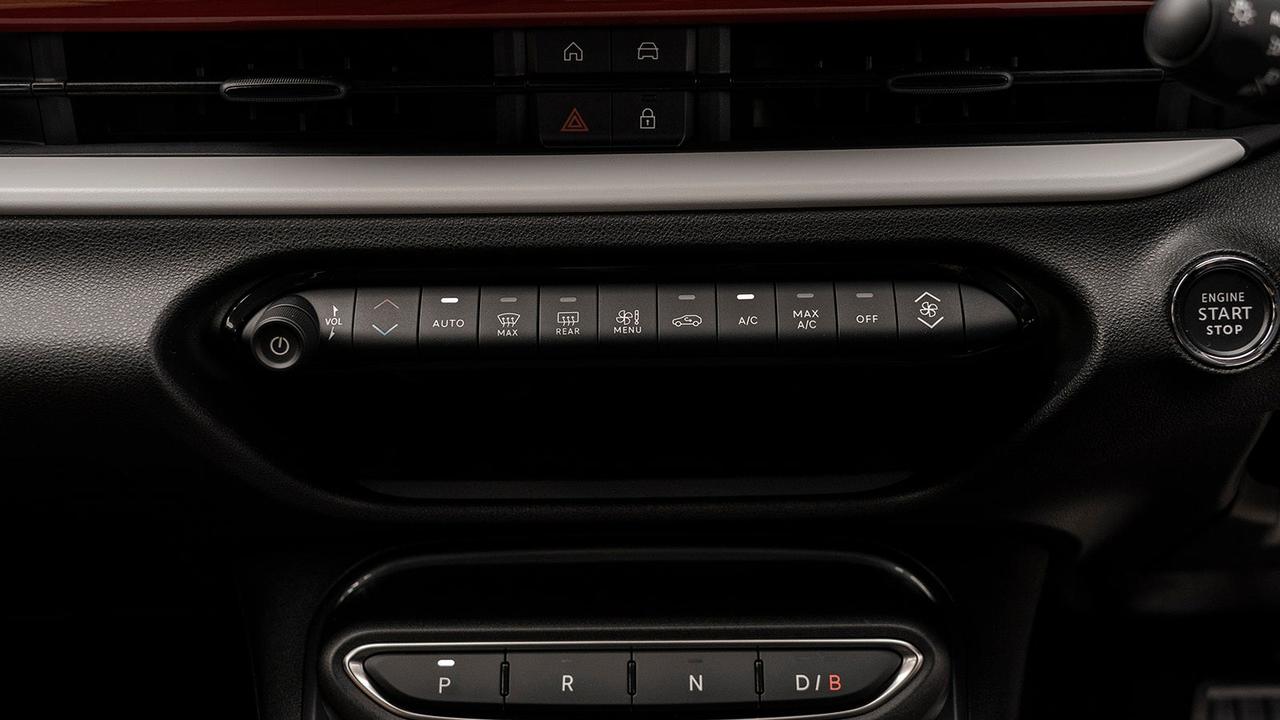
Climate control uses all the same hardware as air con – a pump, a condenser, an evaporator and a maze of pipework to link it all together. What climate control adds is a temperature sensor and a computer to monitor it. The computer constantly adjusts how much air con or heating is required based on the cabin's temperature and the temperature you've set the climate control to.
Despite the extra complexity behind the scenes, climate control is designed to be easier to use than air con. You should be able to set the climate control to a comfortable temperature and then forget about it, leaving the car to figure out how much cooling or heating is needed. Simple air con setups, conversely, will need to be manually adjusted if the cabin ends up too cold once the system's up and running.
Which is better between climate control and air con?
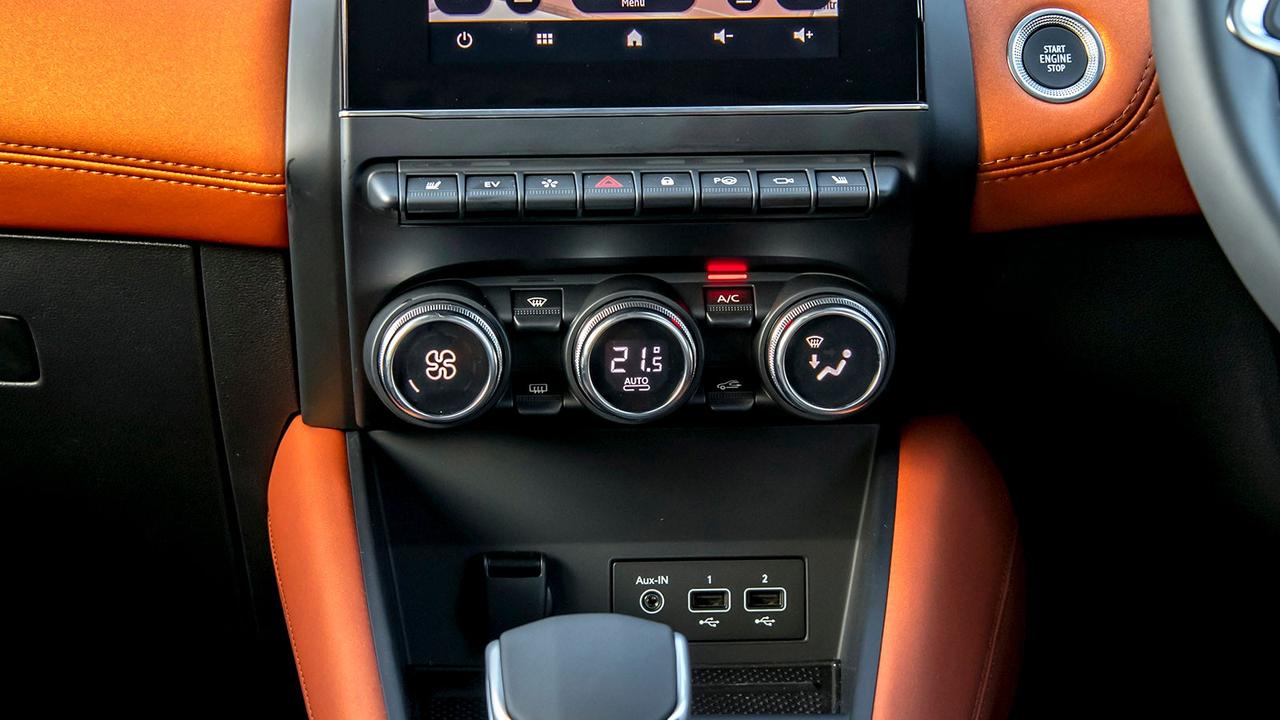
Objectively, climate control is better. The biggest advantage is that you can simply set a comfortable temperature and then leave the system to figure out how to achieve it. You also get much finer control over what temperature you'd like to be, usually allowing you to adjust the system degree-by-degree until you find the perfect setting.
Air con is just as effective at blasting cold air into your cabin on a hot day, but will keep cooling at a fixed rate until you manually change its setting. This could mean several cycles of feeling too cold or too hot until you've found the right point on the dial, with the potential to waste fuel because you've left the air con on for longer.
For most car buyers, the only tangible benefit air con represents over climate control is the fact it's a simpler, cheaper system and, as such, usually ends up on more affordable cars.
What is dual-zone climate control?
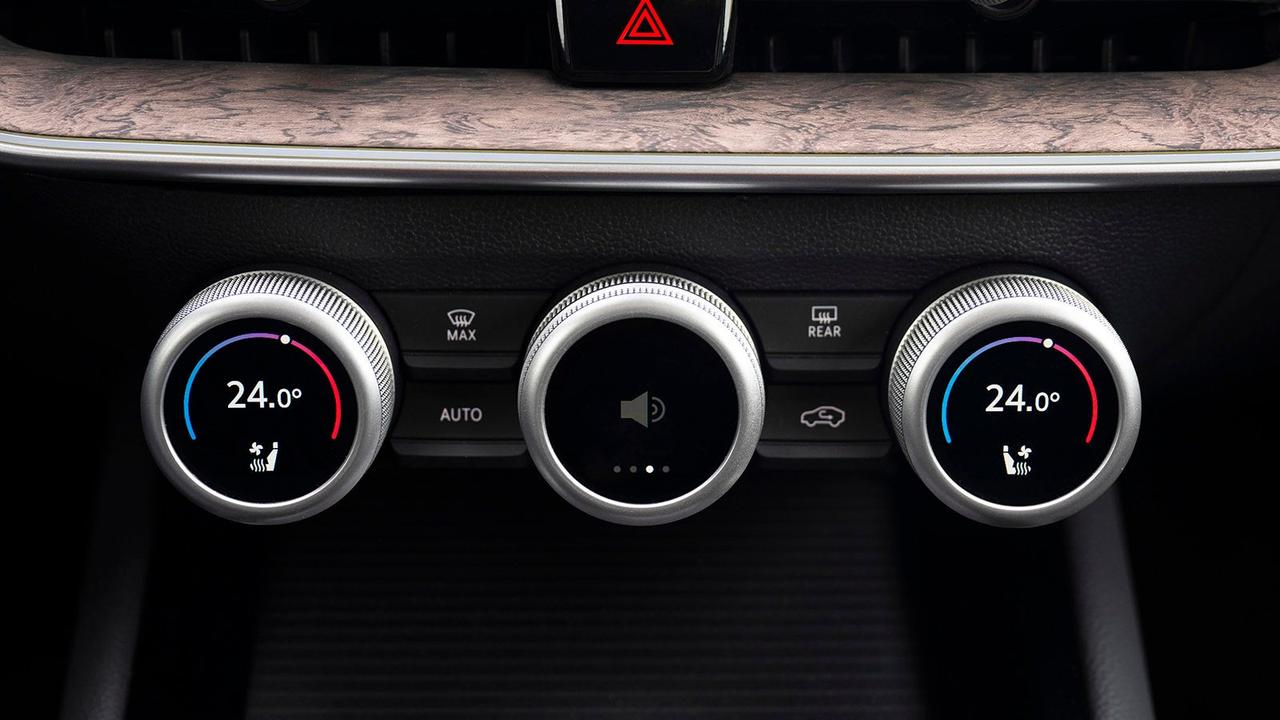
Ever find it tricky to agree with your passenger what temperature you'd like to be? Dual-zone climate control is the answer. This splits the climate controls for the driver's and passenger's side of the car – effectively separating out two zones that the climate control can affect. This means the driver could, for example, set their side of the car to a balmy 21ºC, while the passenger can chill at a comfy 17ºC.
You might also find three-zone or even four-zone climate control on some more expensive models. Three-zone splits up the driver and front passenger zones, and then adds a separate third zone for the rear seats. Four-zone then gives rear-seat passengers their own individual temperature controls, although this is usually reserved for full-blown luxury cars.
Stay cool in a great used car
Motorpoint has a huge selection of nearly new and used cars for sale, and the overwhelming majority will come equipped with either air con or climate control.



































